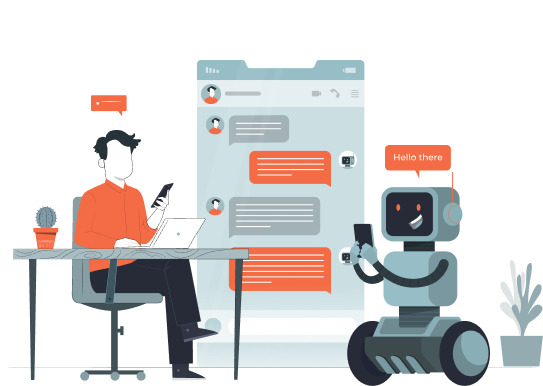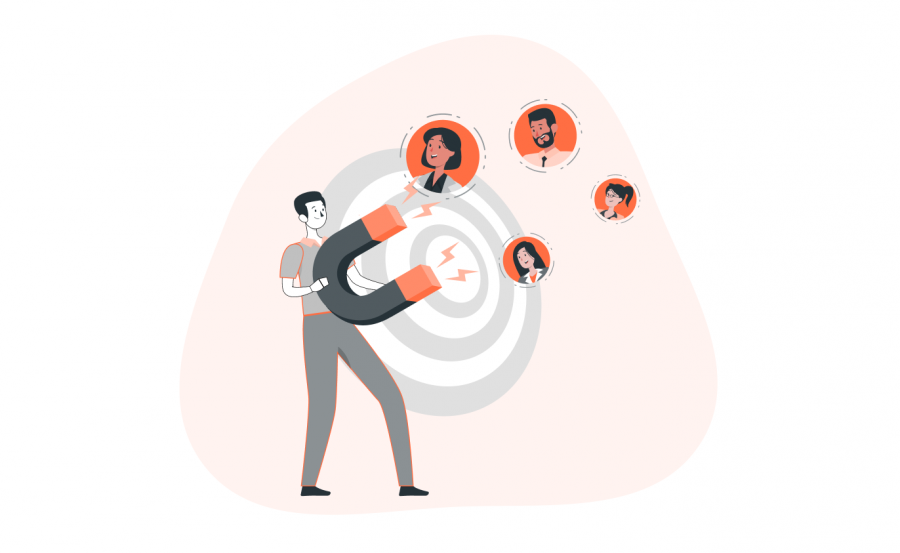In today’s rapidly evolving digital landscape, one technological advancement has taken center stage – Generative Artificial Intelligence (AI). It’s a powerhouse that promises a 14% boost in productivity for software firms, a remarkable feat that’s just the tip of the iceberg when it comes to its potential. However, alongside its incredible capabilities, a looming challenge stands tall – data privacy regulations, especially in the United States.
In this blog, we’ll delve into the fascinating world of Generative AI, explore the significance of data privacy, and provide you with actionable insights on how to strike the perfect balance between innovation and compliance while safeguarding generative AI Privacy. So, whether you’re a seasoned AI developer or a high school student curious about the future of technology, this article is for you.
The Productivity Boost of Generative AI
Before we dive into data privacy, let’s first understand why Generative AI has become the darling of the tech world. Recent studies have revealed that companies using Generative AI tools witness a 14% increase in productivity compared to their counterparts. This astounding productivity gain is the result of AI’s ability to automate tasks, generate content, and assist in decision-making processes.
In essence, Generative AI is revolutionizing the way we work, making our lives more efficient, and driving innovation across industries. But with great power comes great responsibility, especially when it comes to protecting sensitive user data and preserving generative AI privacy.
The Privacy Challenge: Data Regulations in the U.S.
In the United States, there’s no one-size-fits-all data privacy law. Instead, we have a patchwork of individual state privacy laws, each with its own unique set of regulations. Unlike countries like the European Union, which have GDPR, the U.S. lacks a uniform national privacy law. This presents a significant challenge for organizations utilizing Generative AI while trying to maintain privacy in generative AI.
As companies feed vast amounts of data into AI training models, they walk a fine line between innovation and the risk of data exposure and noncompliance. The race to adopt Generative AI is understandable, but it’s vital to address data privacy right from the start, even if it means slowing down slightly.
Balancing Innovation and Compliance
One common trend when new, exciting technologies emerge is the “adopt first, work out the bugs later” mentality. This was evident in 2020 when organizations rushed to the cloud to support remote work. But during this time, many prioritized speed over implementing robust data protection measures for a cloud-first posture.
Generative AI adoption can potentially compromise generative ai data protection. A study by Writer, a popular Generative AI platform, found that 46% of business leaders believed employees had accidentally shared private information on platforms like ChatGPT. While the urge to adopt quickly is natural, addressing data privacy early on, even if it causes a slight delay, is a wise choice to avoid noncompliance and its consequences.
Understanding the Complex Compliance Landscape
The United States’ compliance environment is a puzzle, with each state crafting its own data privacy regulations. For instance, California, Virginia, Colorado, Connecticut, and Utah have enacted or will enact data privacy laws in recent years, impacting generative AI data privacy. To add to the complexity, these laws vary widely in their scope and requirements.
For example, the California Privacy Rights Act (CPRA) leans towards consumer-friendliness, while the Utah Consumer Privacy Act (UCPA) is more business-oriented. Navigating this complex landscape requires a dedicated team with expertise in deciphering regulations, spotting potential conflicts between laws, and creating a robust compliance plan for generative ai data protection.
This compliance team should consist of various stakeholders, including legal counsel, a data protection officer (DPO), data management and security experts, a privacy officer, and IT personnel. Together, they will help organizations set clear standards for using Generative AI while ensuring best practices for data protection and generative AI privacy.
Implementing Data Protection Best Practices
Now that we’ve emphasized the importance of data privacy and compliance let’s explore practical steps to ensure user data remains secure while harnessing the power of Generative AI while preserving privacy in generative AI:
Strict Access Controls
Limit data access to team members who genuinely need it, enhancing privacy in generative AI. This prevents unauthorized sharing of sensitive data in AI training models.
Secure Data Protection Methods
Different stages in the data lifecycle, such as ingestion, analytics, sharing, and storage, require specific protection methods. Determine when data should be masked, tokenized, or encrypted to ensure its generative ai data privacy.
Data Scrutinization
Less is often more when it comes to data shared with Generative AI platforms. Minimize the amount of data being fed into the system to reduce the risk of sensitive information slipping through the cracks while preserving privacy in generative AI.
Consistent AI Data Protection Training
The compliance team should develop and continuously update training standards for data protection throughout AI projects, promoting generative AI data privacy. This training should reflect new compliance regulations, threats, and emerging technology trends.
Preparing for the Generative AI Future
The Generative AI explosion is just beginning, and its full impact on businesses is yet to be determined. However, as we harness its power, it’s crucial that we do so in a way that prevents noncompliance and its consequences while preserving privacy in generative AI.
Laying a strong foundation for data protection now will make it a fundamental part of the process rather than a challenging bolt-on process down the line. By following best practices, understanding the compliance landscape, and prioritizing privacy and generative AI, you can unlock the true potential of Generative AI while safeguarding user data.
Preserving Generative AI Privacy
In conclusion, Generative AI is a powerful tool that can transform businesses and boost productivity, all while respecting generative AI privacy. However, this transformation should not come at the cost of data privacy. The complex compliance landscape in the U.S. requires careful navigation, and organizations must prioritize data protection from the outset. By doing so, we can ensure that Generative AI benefits us all without compromising our privacy and generative AI.
At NeoITO, we understand the intricate balance between innovation and data privacy. Our team of experts specializes in SaaS development and AI, and we’re here to help you harness the full potential of Generative AI while safeguarding user data and ensuring generative AI privacy.
If you’re ready to take the next step in implementing Generative AI solutions and custom AI chatbots for your business while maintaining the highest standards of privacy, reach out to us today. Our service excellence and expertise in the field will guide you towards a future where innovation and data privacy coexist harmoniously.
FAQs
What is Generative AI, and how does it boost productivity?
Generative Artificial Intelligence (AI) is a technology that can automatically generate content, assist in decision-making processes, and automate tasks. It boosts productivity by streamlining workflows, reducing manual labor, and enhancing efficiency. Studies have shown that companies using Generative AI tools experience a remarkable 14% increase in productivity compared to those that don’t.
How can organizations balance innovation and compliance when adopting Generative AI?
While the urge to adopt Generative AI quickly is natural, it’s essential to prioritize data privacy from the start. Organizations should resist the “adopt first, work out the bugs later” mentality. Addressing data privacy early, even if it causes a slight delay in implementation, is a wise choice to avoid noncompliance risks.
What is the role of a compliance team in ensuring privacy in Generative AI?
A compliance team plays a critical role in deciphering data privacy regulations, identifying potential conflicts between state laws, and creating a robust compliance plan. This team typically includes legal counsel, a data protection officer (DPO), data management experts, security specialists, a privacy officer, and IT personnel. Together, they set clear standards for using Generative AI while ensuring data protection and privacy.
What are some practical steps for ensuring user data remains secure when using Generative AI?
To preserve privacy in Generative AI, organizations should implement strict access controls, limiting data access to team members who genuinely need it. Additionally, they should employ secure data protection methods, including data masking, tokenization, and encryption, as appropriate for different data lifecycle stages. Minimizing the amount of data fed into Generative AI platforms and providing consistent AI data protection training are also essential practices.




